Holy Water — What Exactly is Trappist Beer?
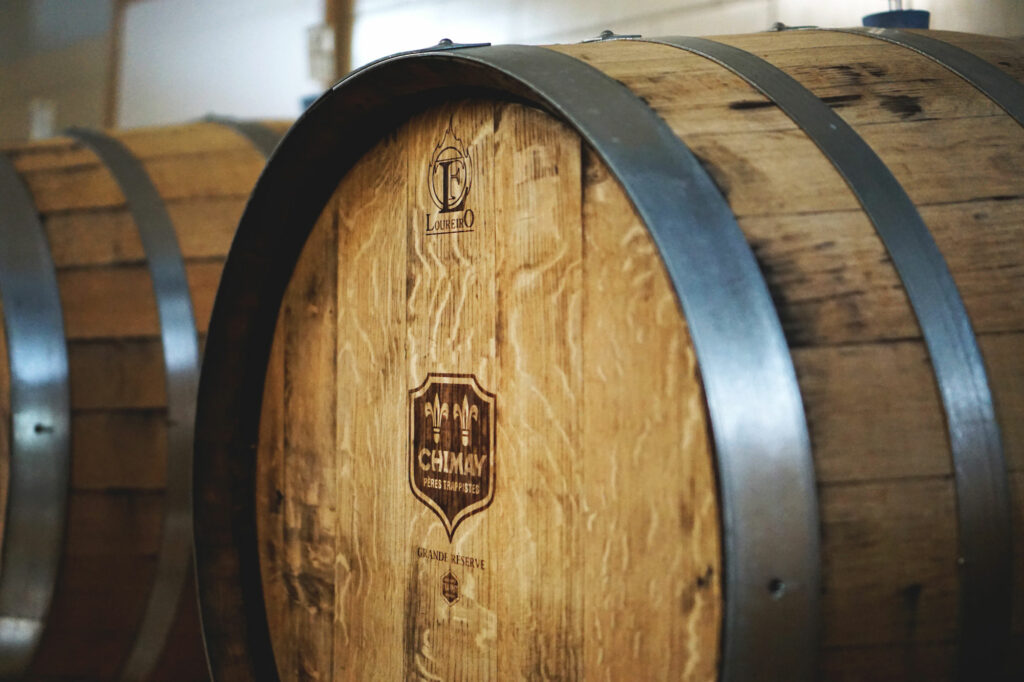
Not many brewery tours include being shown around a graveyard. But then, the monastic breweries of Belgium are not like most other breweries.
Truth be told, this was not a morbid moment but a peaceful one. Standing within the grounds of Scourmont Abbey, to the far south of the Belgian region of Wallonia, a few miles from the French border, here I paid my respects to the former stewards of Brasserie de Chimay—servants of the Cistercian order, perhaps better known as Trappist monks.
I had no idea what to expect when I was picked up in Brussels earlier that day, before being taken into the depths of the Wallonian countryside. Would I actually meet a monk? What kind of brewing facility actually exists behind the ancient brick and stone of the Abbey? The daydreaming continued before we eventually broke through the treeline and the monastery came into view. They don’t usually offer tours at Chimay. Guests are usually taken to a visitors centre and bar closer to town where you can sample the beers and the cheeses the monks produce, but I had got lucky, and was to be given the grand tour.
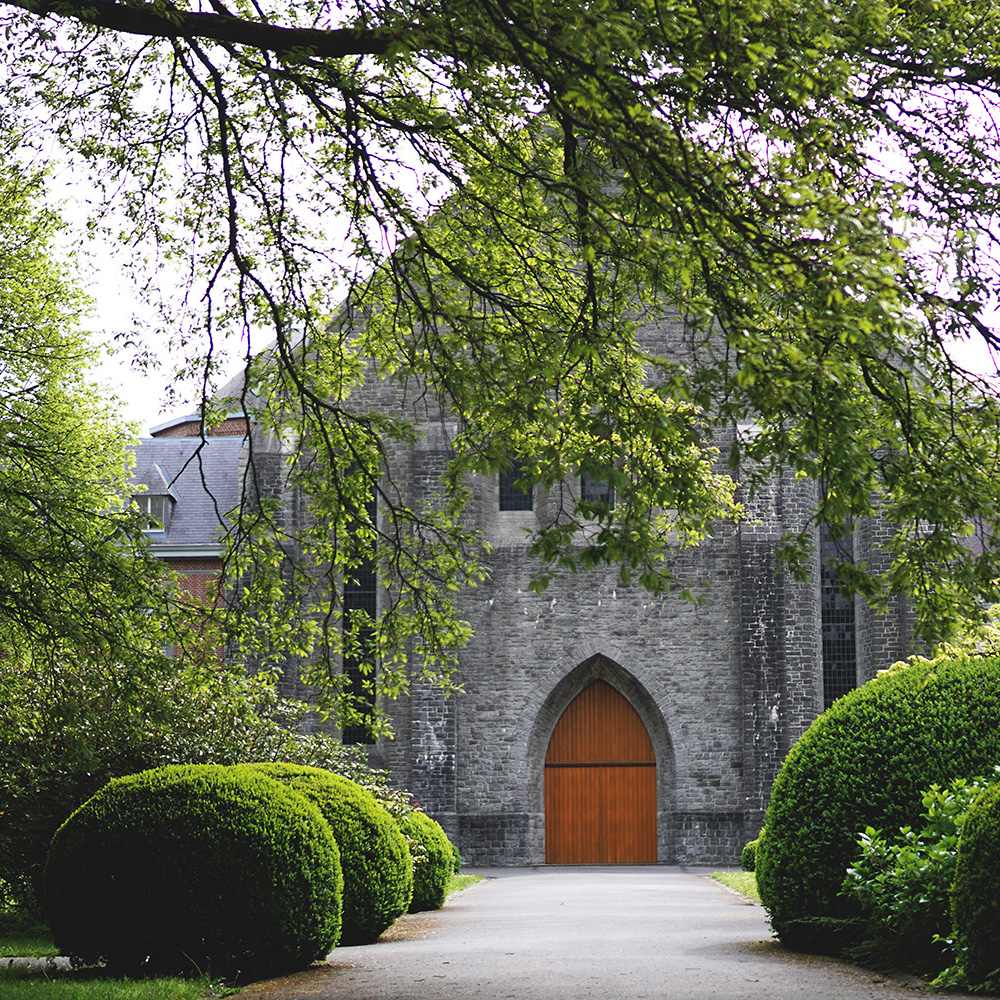
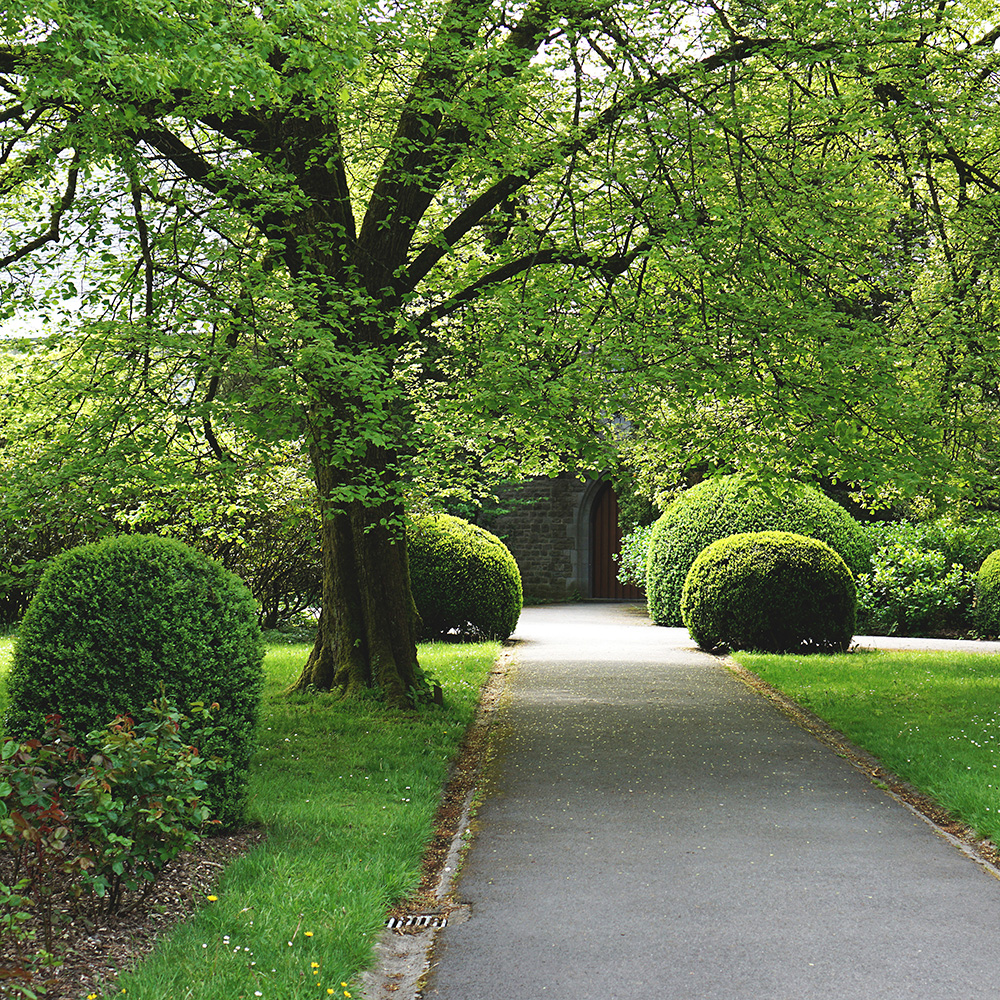
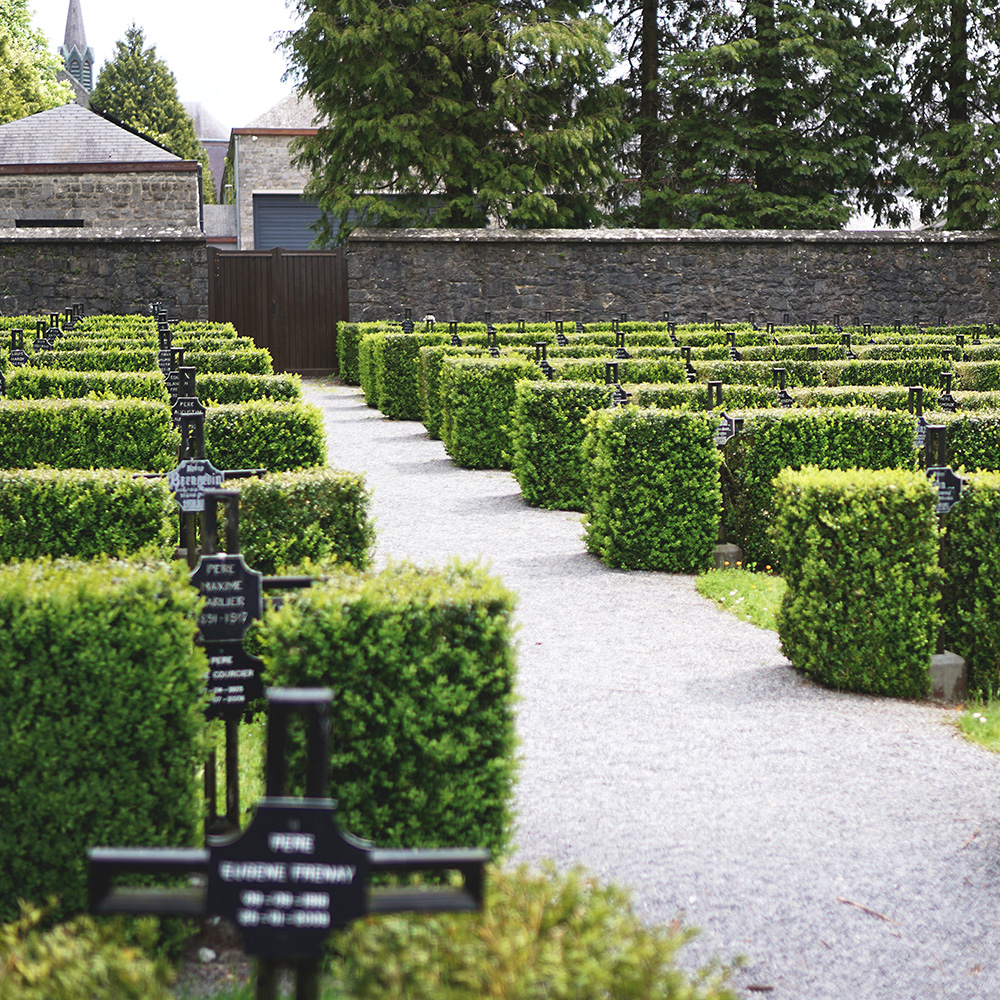
Founded in 1862, Chimay is perhaps one of the best known Trappist breweries in the world. Named for the principality its monastery lies within, it is renowned for beers including Première (Red), Cinq Cents (White), and Grande Réserve (Blue). The Red is a style most commonly referred to as Dubbel, and is not unlike a strong English bitter; deep red in colour with a sweet, fruitcake character and dry finish. The White, a Tripel, is the brewery’s hoppiest beer (although perhaps not all that hoppy by today’s standards) with a peppery snap underpinning a biscuity malt flavour. The Blue, which is a Strong Dark Ale, is more complex, weaving darker malts into the mix, enhancing complexity, as well as alcoholic strength.
What ties Chimay’s portfolio of beers together in terms of flavour is a subtle complexity that’s hard to put your finger on. You might describe it as “funky”, which is a get out clause instead of saying: “this is interesting, but I don’t know how to describe what this tastes like.” This intangible character is representative of the unique chemistry within these beers, which pull together water from the monastery’s own bore hole, hops cultivated in Poperinge, in the northern region of Flanders, and malt from 5th generation Belgian maltster Dingemans. And there’s its unique house yeast strain, isolated by Father Theodore in 1948, and in continuous use at the brewery since then.
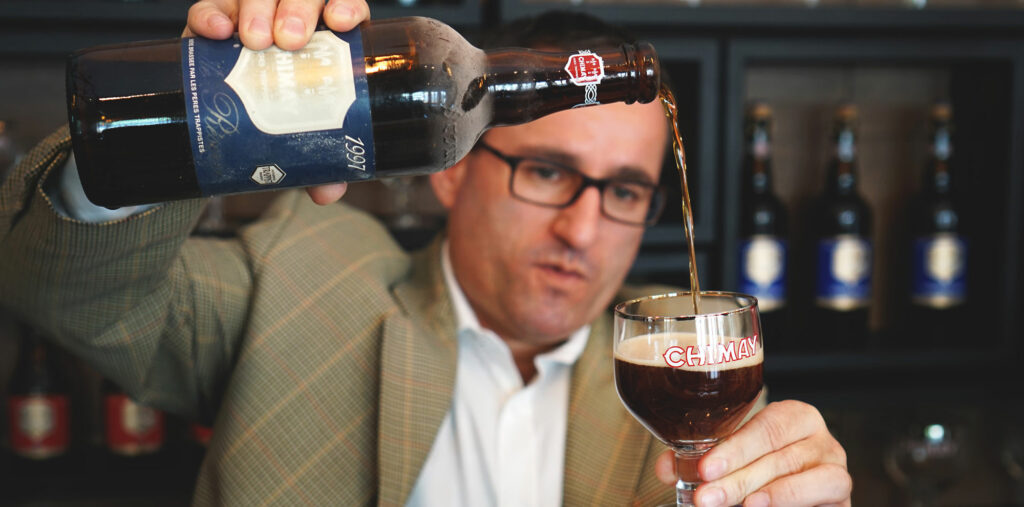
On my trip I had the privilege to see the labs where they propagate this yeast, as well as the technological marvel that is the very modern brewery that sits behind the monastery’s very old walls. The brewery is even soundproofed, so that the noise and whirr of machinery does not distract the monks from their other duties within the abbey, just across the courtyard. I’ve visited many breweries, but this one was particularly special, and cemented itself in my memory like few others. I even had the pleasure of meeting one of the eight monks who then resided at the abbey—although they don’t actually brew these days. Their role more closely resembles that of a board of directors, than brewers.
One of the reasons I feel so sentimental about my trip to Chimay is that its beers were not only my very first introduction to Trappist beers, but along with the famous golden ale Duvel, they were my first ever steps into the wonderful world of Belgian beer as a whole. It’s important to state, however, that while beers like Duvel are referred to as “Abbey” beers they are not all “Trappist” beers.
Trappist products (which as well as beer include other products such as cheese, or fruit preserves) are regulated by an organisation called The International Trappist Association. It defines an Authentic Trappist Product as one that is:
- Made within the immediate surroundings of the abbey
- Produced under the supervision of the monks or nuns
- Profits are intended for the needs of the monastic community, for purposes of solidarity within the Trappist Order, or for development projects and charitable works
Although there are now 14 Trappist breweries worldwide, only 11 of them are currently permitted to use the Authentic Trappist Product mark on their beers. France’s Mont des Cats and Spain’s Cerveza Cardeña do not produce beer within their own abbeys. In January 2021, Belgium’s Achel was stripped of the mark, as it too was no longer able to produce beer at its own Abbey—although it should be said the beer still tastes fantastic.
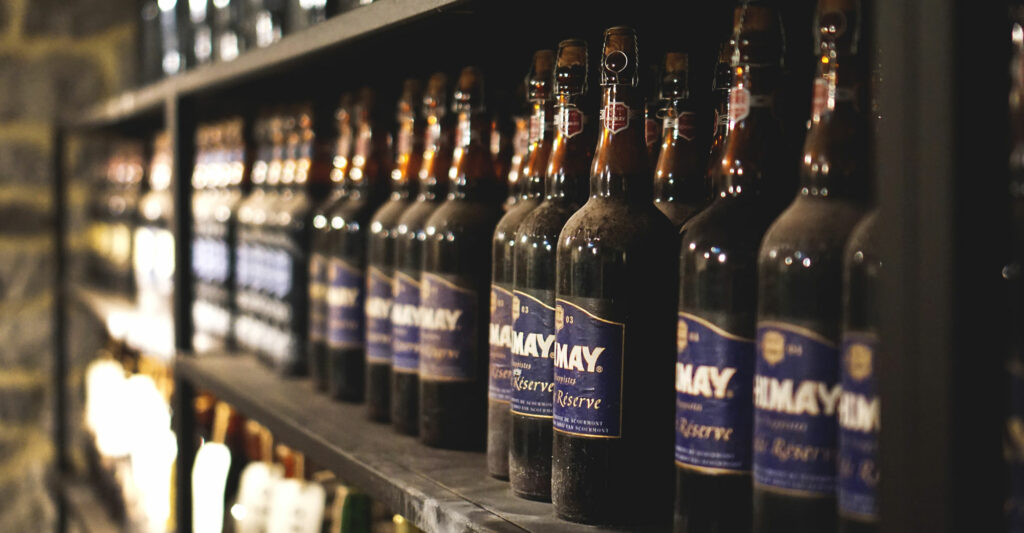
Along with Chimay, the other remaining Trappist breweries are Westmalle, Westvleteren, Orval and Rochefort in Belgium, La Trappe and Zundert in the Netherlands, Italy’s Tre Fontane, Spencer near Boston, Massachusetts in the USA, and Austria’s Stift Engelszell. Most recently the association accepted Mount St Bernard Abbey in Leicestershire, England as a member. The latter was founded as recently as 2018 (although the abbey itself has existed for considerably longer), and produces a single beer known as Tynt Meadow.
(Note: Shortly after this piece was submitted St. Joseph’s Abbey, behind the Spencer Brand, sadly announced it was to cease production due to brewing no longer being a “viable industry” for the Abbey to pursue.)
Until 2012 there were only seven breweries considered to be Trappist, six of which were in Belgium. It is perhaps for this reason that, despite some newer Trappist breweries such as Spencer now producing modern styles like New England IPA, that this unique group of producers have become synonymous with Abbey-style beers like Dubbel, Tripel, and Strong Dark Ale the world over.
This is perhaps why these breweries are so revered. There is a certain celestial magic within these beers that is difficult to replicate—that “funkiness” I described early, which isn’t really all that funky, but it is complex, and very delicious. So how do they get them to taste that way, exactly?
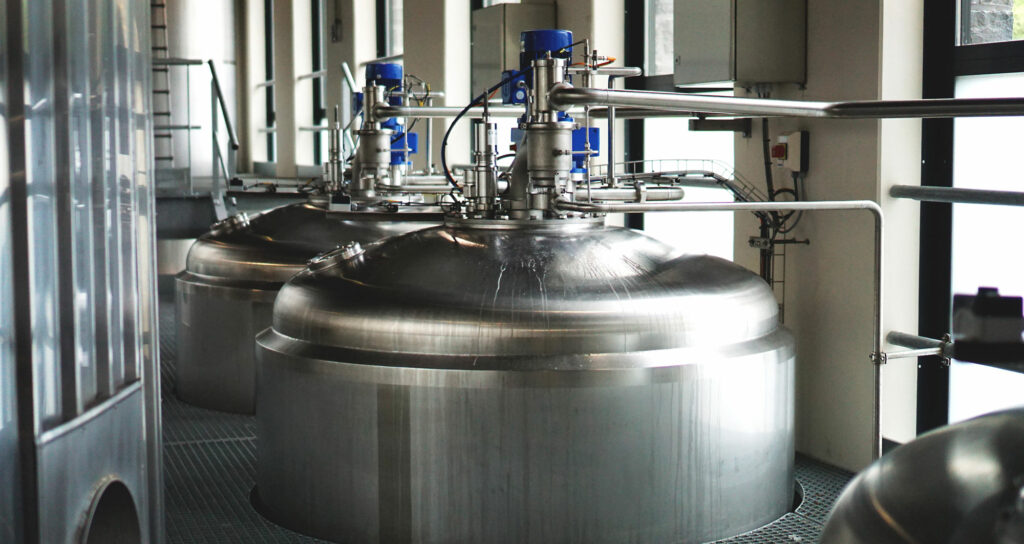
Water chemistry is hugely important, with Trappist breweries typically using water from their own proprietary sources on site. Without knowing the exact chemistry from a particular well this can be difficult to replicate. It also goes without saying that you can’t simply rock up to Chimay with a bucket and ask for a pitch of its particular yeast strain. However, you can invest in something like the Trappist High Gravity or Belgian Abbey Ale II strains from Wyeast, or perhaps WLP530 Abbey Ale from White Labs. These are able to comfortably produce the high-in-alcohol styles, replete with that intangible “funky” character that is inherent to many traditional Trappist beers.
But this is only part of the complex puzzle that makes these beers so special. While they are not particularly well known for being all that hoppy (although a good bolt of Goldings, or something with higher alpha acids such as Target or Challenger will give you that classic peppery Tripel) the malt used by Trappist breweries is crucial to their flavour. In fact all Trappist breweries in Belgium and the Netherlands use malts produced by 5th generation Belgian maltster Dingemans, which has been supplying Abbey breweries since it was founded in 1875.
I’ve always considered base malts to have far more influence over flavour than they are often given credit for. Think about it though: English malts are prized in styles such as Bitter and Golden Ale, German malts excel in the production of Helles and Pilsner. It only makes sense then, that in order to produce a note-perfect Abbey style beer, only the finest Belgian malt will do.
But what does the future for Trappist and Abbey beers look like? These styles became hugely popular in the United States from the 1980s onwards, largely thanks to the influence of the sadly departed beer writer Michael Jackson. Over the past few years however, their popularity has waned, with the explosion of IPAs, and strong, flavoured stouts pulling the spotlight away from these classic styles.
Although I’m of the opinion that tastes are cyclical, and although palates shift, the classics will always remain so. Do yourself a favour and grab a bottle of Orval, Westmalle Tripel, or Rochefort 10 and give yourself a reminder of just how exemplary these beers are. In 2022 we’ve already seen drinkers turn back to beer styles like Mild and Bitter, which are comforting and reliable. I’m confident that a growing fondness for European classics like Trappist and Abbey beers will come hot on the heels of this, meaning there’s never been a better time to try your hand at brewing one.
—Matthew Curtis
Check out our tour of Dingemans Malts